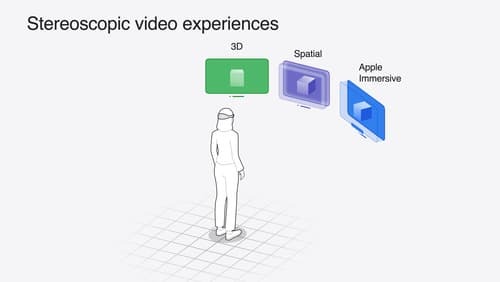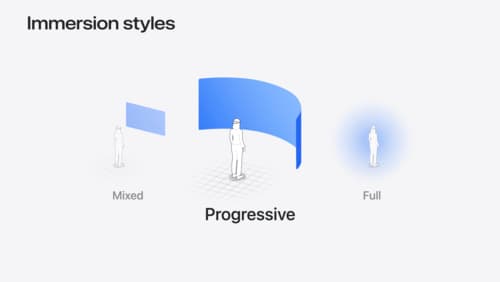what WWDC session about visionos (aka xros) uses dismisswindow to close an immersive space?
Asked on 2024-08-02
1 search
The WWDC session that discusses using dismissWindow to close an immersive space in visionOS is titled "Dive deep into volumes and immersive spaces". This session covers various aspects of creating and managing immersive spaces, including how to handle transitions and interactions within these spaces.
For more details, you can refer to the chapter on immersive spaces in this session:
Relevant Sessions
- Dive deep into volumes and immersive spaces
- Enhance the immersion of media viewing in custom environments
- Design interactive experiences for visionOS
These sessions collectively provide a comprehensive understanding of immersive spaces and their management in visionOS.

Build compelling spatial photo and video experiences
Learn how to adopt spatial photos and videos in your apps. Explore the different types of stereoscopic media and find out how to capture spatial videos in your iOS app on iPhone 15 Pro. Discover the various ways to detect and present spatial media, including the new QuickLook Preview Application API in visionOS. And take a deep dive into the metadata and stereo concepts that make a photo or video spatial.

Design interactive experiences for visionOS
Learn how you can design a compelling interactive narrative experience for Apple Vision Pro from the designers of Encounter Dinosaurs. Discover how these types of experiences differ from existing apps, media, and games, and explore how to design narratives that bring audiences into new worlds. Find out how you can create stories that adapt to any space and size, provide multiple levels of interaction to make them accessible to all, and use animation, spatial audio, and custom gestures to further immerse people in your experience.

Dive deep into volumes and immersive spaces
Discover powerful new ways to customize volumes and immersive spaces in visionOS. Learn to fine-tune how volumes resize and respond to people moving around them. Make volumes and immersive spaces interact through the power of coordinate conversions. Find out how to make your app react when people adjust immersion with the Digital Crown, and use a surrounding effect to dynamically customize the passthrough tint in your immersive space experience.
